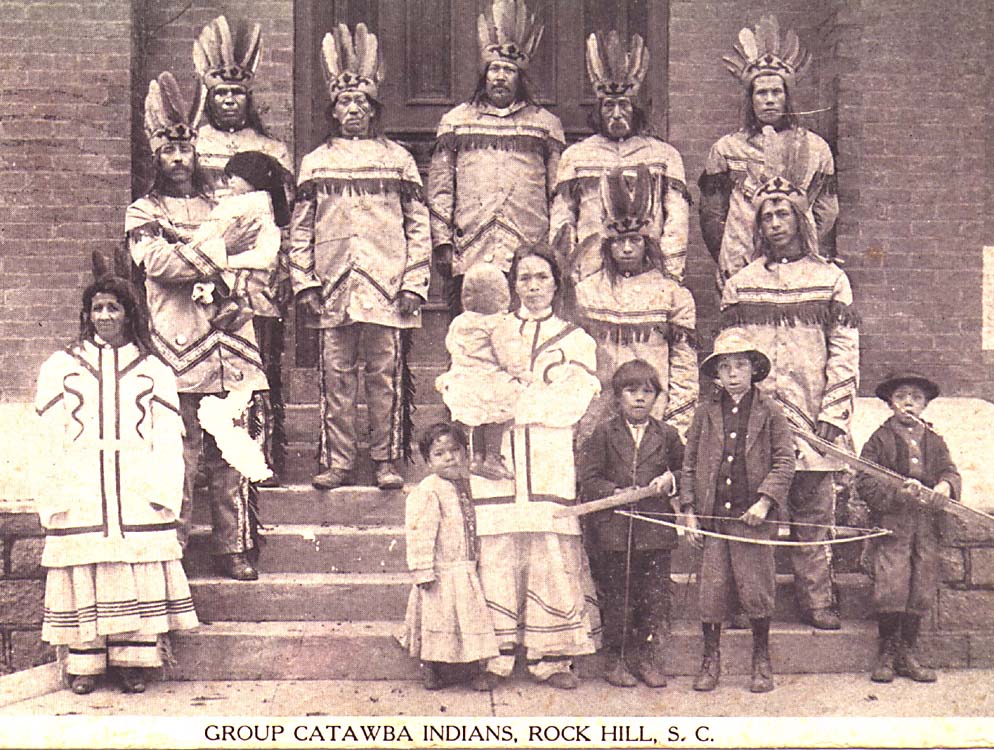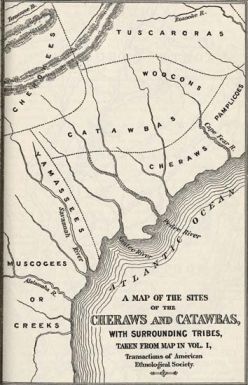
Okay, here is a 1200-word journalistic article in English about the history of the Catawba Nation in South Carolina.
The Resilient River People: A Journey Through the Enduring History of the Catawba Nation
ROCK HILL, SC – From the bustling gaming floor of the Catawba Two Kings Casino, a beacon of modern economic development, it might seem as though the Catawba Nation has only recently emerged onto the South Carolina landscape. Yet, this impression couldn’t be further from the truth. The Catawba people, known as "Ye Iswä" or the "People of the River," possess a history as ancient and enduring as the Catawba River itself, a story deeply etched into the very soil of the Piedmont region for millennia. Their journey, marked by profound resilience against disease, displacement, and termination, stands as a testament to an unwavering spirit and an unbreakable connection to their ancestral lands.
For over 6,000 years, long before European sails dotted the horizon, the Catawba Nation thrived in the lush river valleys of what is now North and South Carolina. Their sophisticated agrarian society cultivated corn, beans, and squash, complemented by hunting and fishing. They were renowned for their distinctive, hand-coiled pottery – a tradition that continues to this day, making them one of the oldest active pottery traditions in North America. This pottery, often unglazed and fired at low temperatures, speaks to a continuity of craft and culture stretching back through countless generations.
The Cataclysm of Contact

The arrival of Europeans in the 16th century marked a catastrophic turning point. While Hernando de Soto’s expedition traversed the region in 1540, the most devastating impact came not from direct conflict, but from invisible invaders: European diseases. Lacking immunity to smallpox, measles, and influenza, the Catawba population, estimated to be in the tens of thousands pre-contact, was decimated. Historians estimate that by the early 18th century, their numbers had plummeted by as much as 90%, leaving a fraction of their former strength. This demographic collapse forced the Catawba to consolidate, absorbing remnants of smaller, equally devastated tribes like the Sugaree, Waxhaw, and Cheraw, forming a multi-ethnic confederacy united under the Catawba banner.
Despite their diminished numbers, the Catawba quickly adapted to the new geopolitical landscape. They became crucial allies to the burgeoning English colonies, serving as a buffer against rival Native American nations like the Cherokee, Creek, and Shawnee, as well as against French and Spanish incursions. Their military prowess was essential during conflicts such as the Yamasee War (1715-1717) and the French and Indian War (1754-1763).
One of the most prominent figures of this era was Chief King Hagler, who led the Catawba from 1750 until his assassination in 1763. Hagler was a shrewd diplomat and a steadfast advocate for his people, navigating the complex web of colonial politics. He famously appealed to the South Carolina government for protection and justice, once stating, "We desire that no white People may come over the Boundary Line and settle upon our Lands. If we have not the Liberty to go on their Lands and take their Horses and Hogs, we desire they may not come on our Lands and take our deer and other Game." His words underscored a growing tension: the colonists’ insatiable demand for land.
The Shrinking Homeland and the Revolutionary War
By the mid-18th century, despite their loyalty, the Catawba’s territory was rapidly shrinking under the relentless pressure of colonial expansion. The Treaty of Augusta in 1763, signed by King George III, formally recognized a 144,000-acre reservation for the Catawba in South Carolina. This was a significant reduction from their aboriginal claims but offered a glimmer of hope for a protected homeland.
However, this protection was short-lived. When the American Revolution erupted, the Catawba once again sided with the colonists, contributing warriors to the Patriot cause, fighting alongside figures like General Thomas Sumter. They endured severe hardship during the war, their reservation plundered by British forces. In return for their service, the newly formed United States promised to honor their treaty rights.
Yet, post-Revolutionary War, the state of South Carolina, not the federal government, largely dealt with Native American affairs. The pressure for land became insurmountable. White settlers encroached on the reservation, and the state, eager to expand, initiated a series of negotiations. The culmination of this pressure was the devastating Treaty of Nation Ford in 1840. In this agreement, the Catawba ceded their entire 144,000-acre reservation to South Carolina in exchange for $20,000, some smaller land purchases, and the promise of a new, smaller reservation in North Carolina. The move to North Carolina proved disastrous, and within two years, the disillusioned Catawba returned to South Carolina, where the state provided them with a small, 600-acre tract of land near their traditional homelands, a fraction of their former territory.
The Era of Termination and the Fight for Survival
For over a century following Nation Ford, the Catawba Nation existed in a state of diminished sovereignty and increasing poverty. Dependent on the state for limited services, their language slowly faded, and their unique cultural identity was under constant threat. Despite these hardships, the resilient spirit of the "River People" endured, often through the quiet strength of family and community, and the continued practice of pottery.

The mid-20th century brought another existential crisis. In 1959, under the federal government’s controversial "termination policy," the Catawba Nation was officially "terminated." This policy aimed to assimilate Native Americans into mainstream society by ending federal recognition and services, liquidating tribal assets, and transferring jurisdiction to state governments. For the Catawba, termination meant the loss of their federal trust status, access to vital services, and the erosion of their sovereign rights. It was a devastating blow, described by many as a second dispossession.
But termination did not extinguish the Catawba. Instead, it ignited a renewed determination to reclaim their identity and sovereignty. Led by tenacious tribal leaders and activists, the Catawba began a long, arduous fight for federal recognition and restitution for the injustices they had suffered. This struggle included complex legal battles, land claims, and relentless lobbying efforts in Washington D.C.
Restoration and a New Dawn
After decades of unwavering advocacy, the Catawba Nation achieved a monumental victory. In 1993, the Catawba Indian Land Claim Settlement Act was signed into law. This landmark agreement formally restored federal recognition to the Catawba Nation, provided $50 million in federal funds, and established a new, 3,000-acre reservation in York County, South Carolina. It was a moment of profound vindication and a powerful affirmation of their enduring nationhood.
With restored sovereignty, the Catawba Nation embarked on a path of self-determination and economic development. The establishment of the Catawba Two Kings Casino is a critical component of this strategy, designed to generate revenue for tribal services, education, healthcare, and cultural preservation. "This casino is not just about gaming," stated Chief William "Bill" Harris, the current leader of the Catawba Nation. "It’s about our future, about providing for our people, and about finally having the resources to protect and promote our unique culture and history."
Today, the Catawba Nation continues to revitalize its heritage. Efforts are underway to preserve and teach the Catawba language, a Siouan language that had nearly gone extinct. The ancient art of pottery making is experiencing a resurgence, with master potters passing down their knowledge to younger generations. The Nation is also focused on environmental stewardship of their lands and waters, embodying their ancient identity as the "People of the River."
The story of the Catawba Nation is a powerful narrative of survival, adaptation, and unwavering spirit. From their deep ancestral roots in the Piedmont, through the devastating impact of European contact, the betrayal of land treaties, and the challenges of termination, they have emerged as a vibrant, self-governing people. Their journey is a vital chapter in the history of South Carolina and a profound reminder of the strength and resilience of Indigenous nations across America. As the Catawba look to the future, they do so with a profound respect for their past, ensuring that the legacy of the River People will flow strongly for generations to come.


